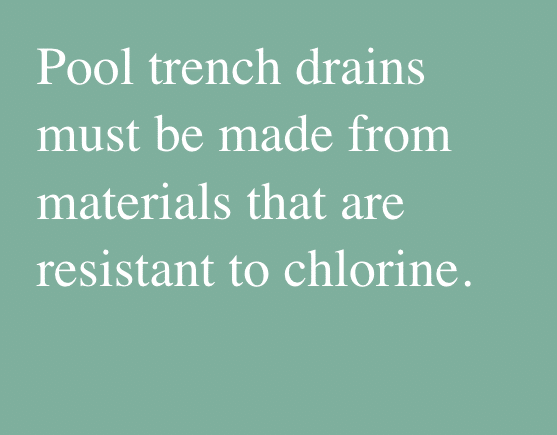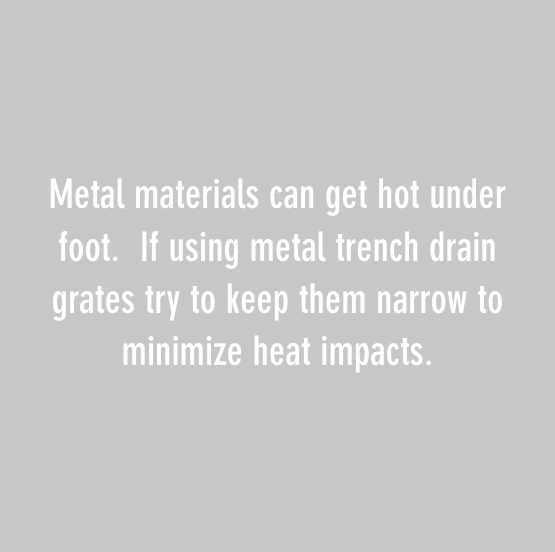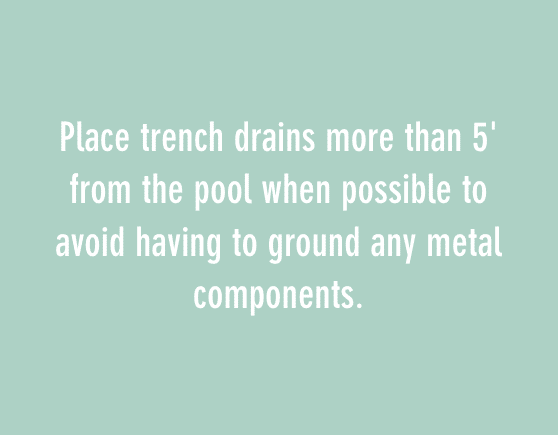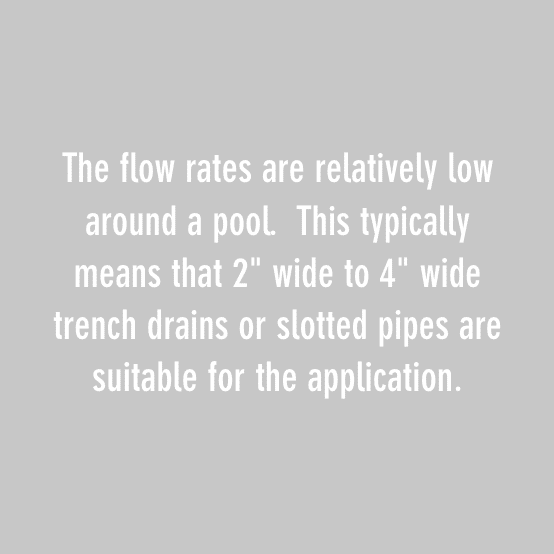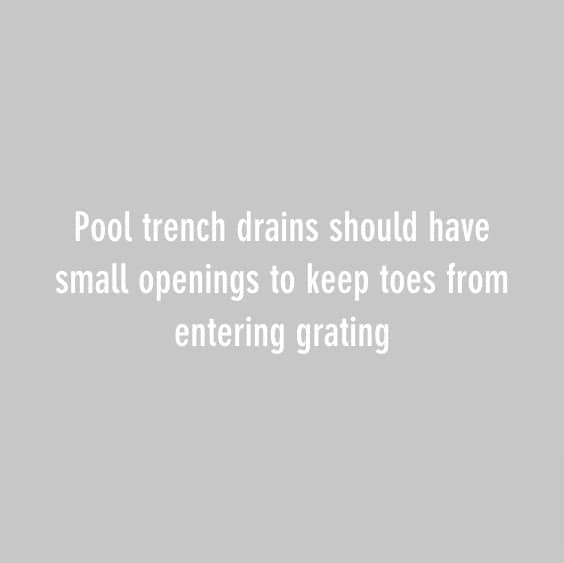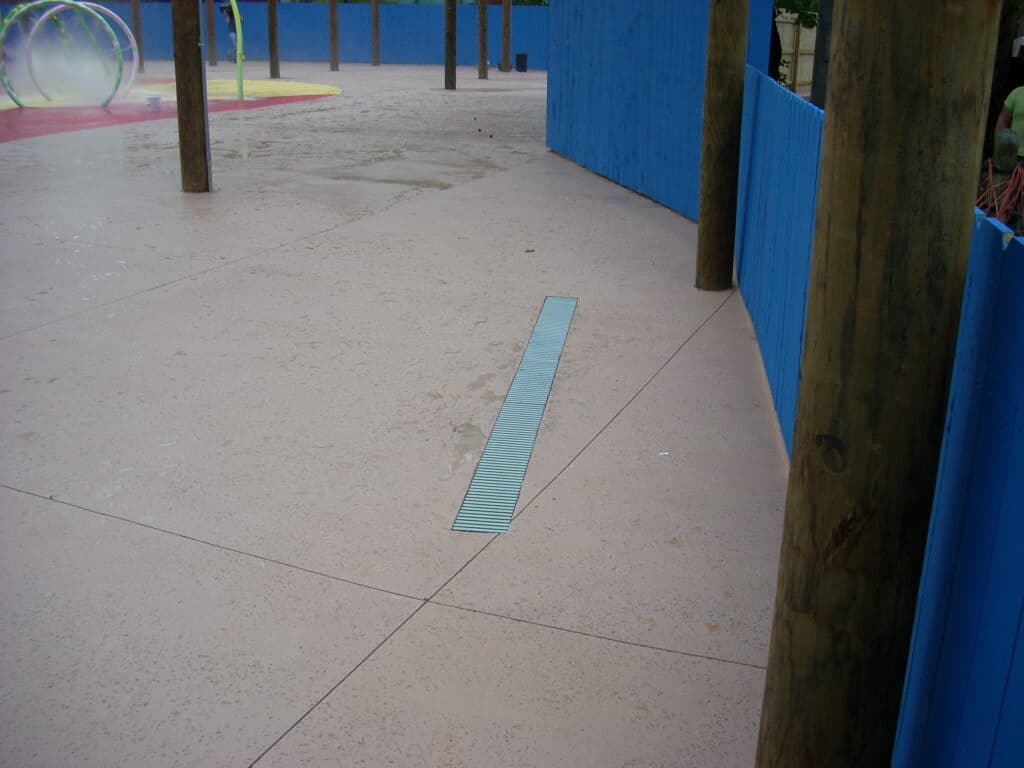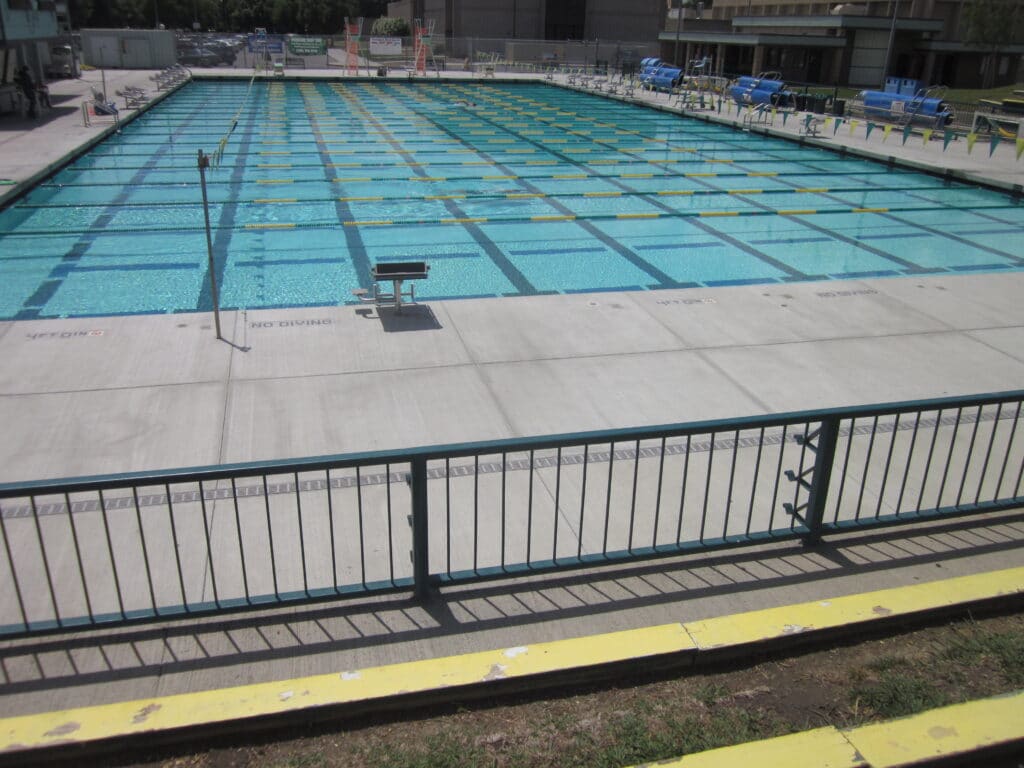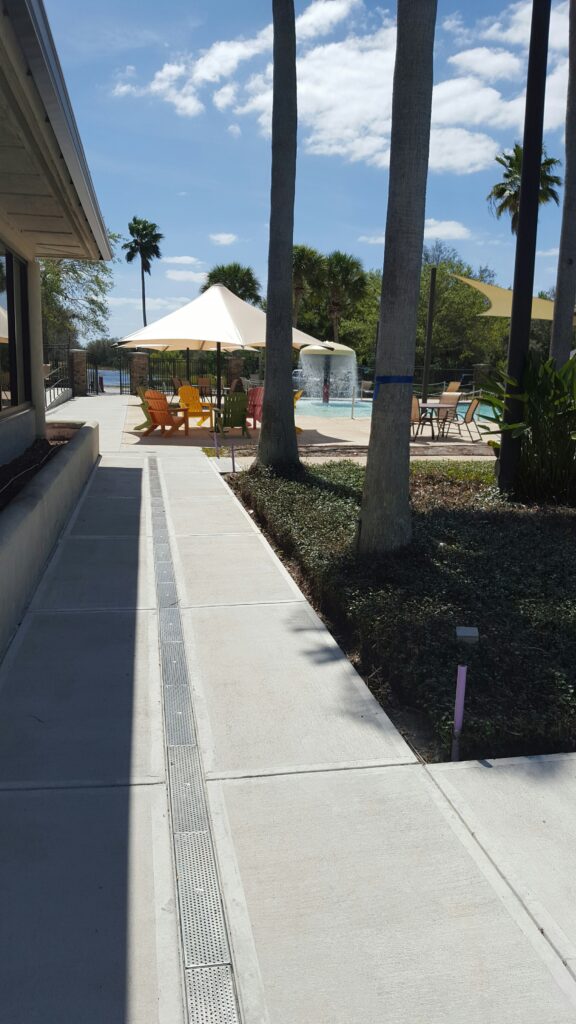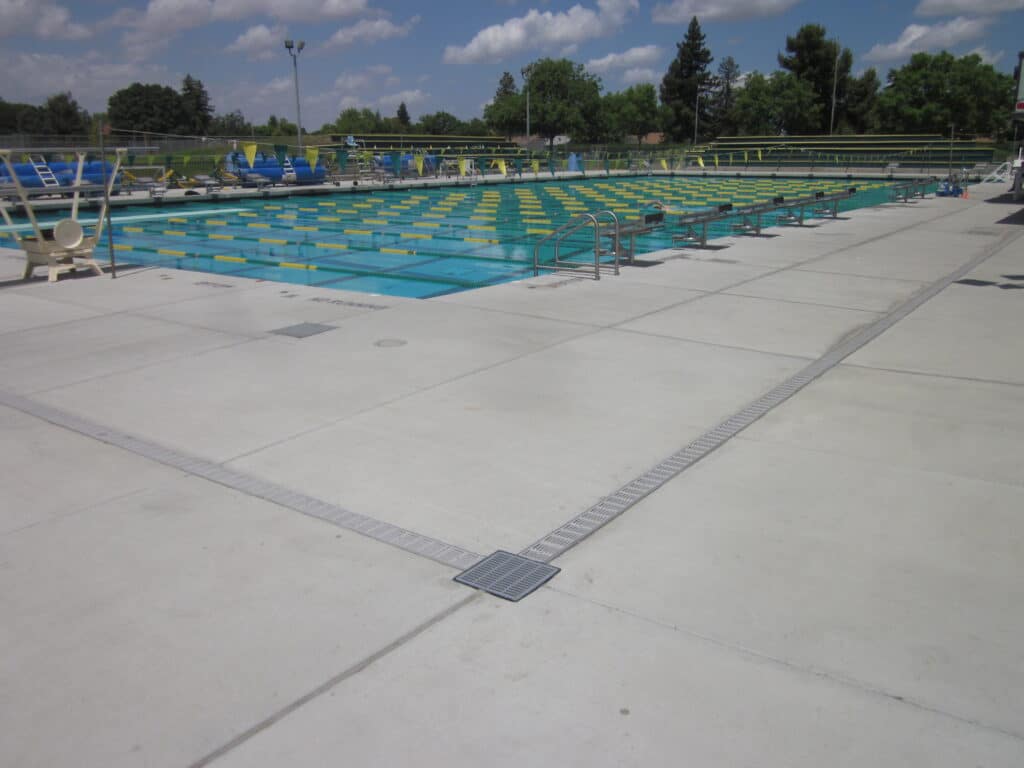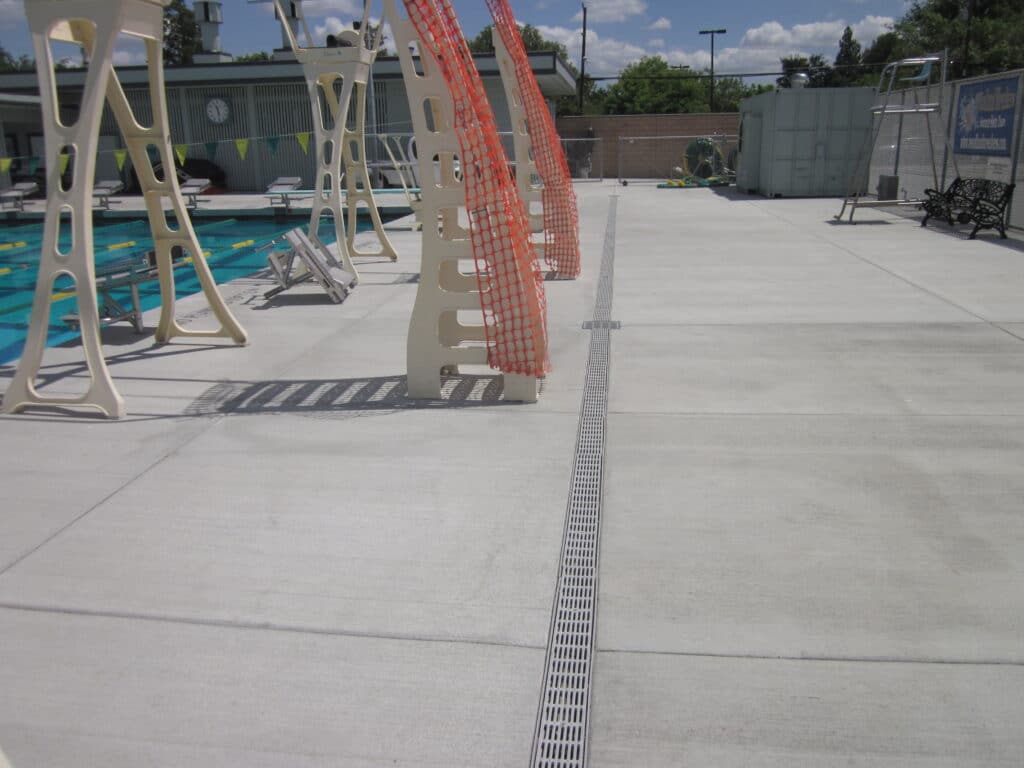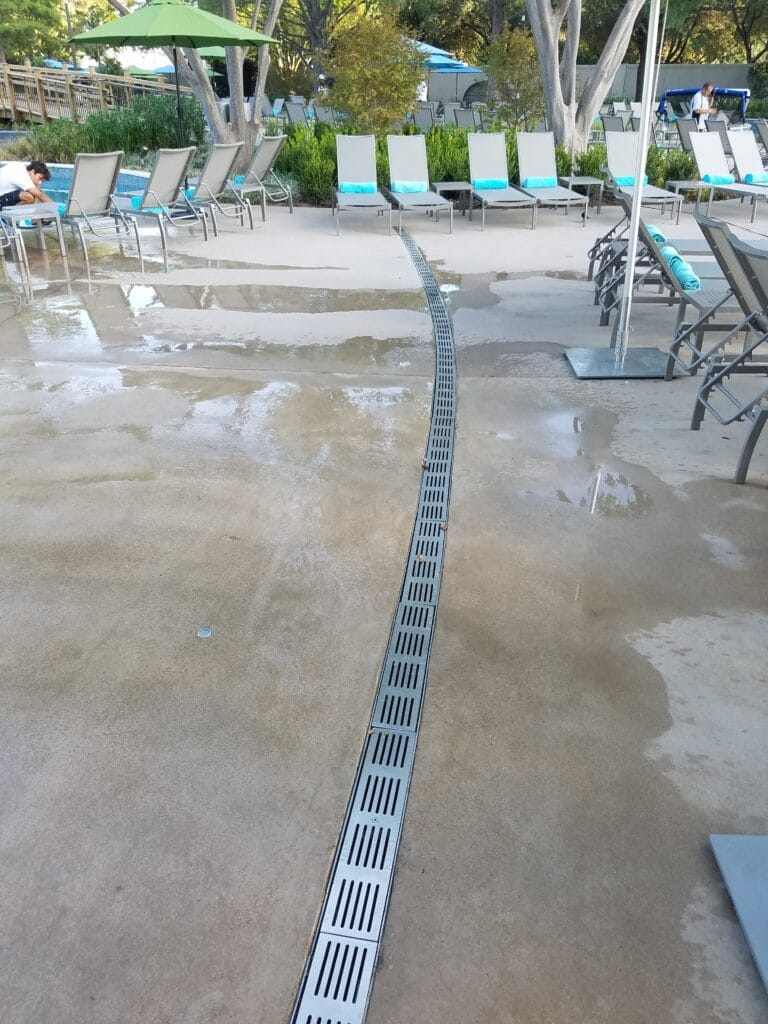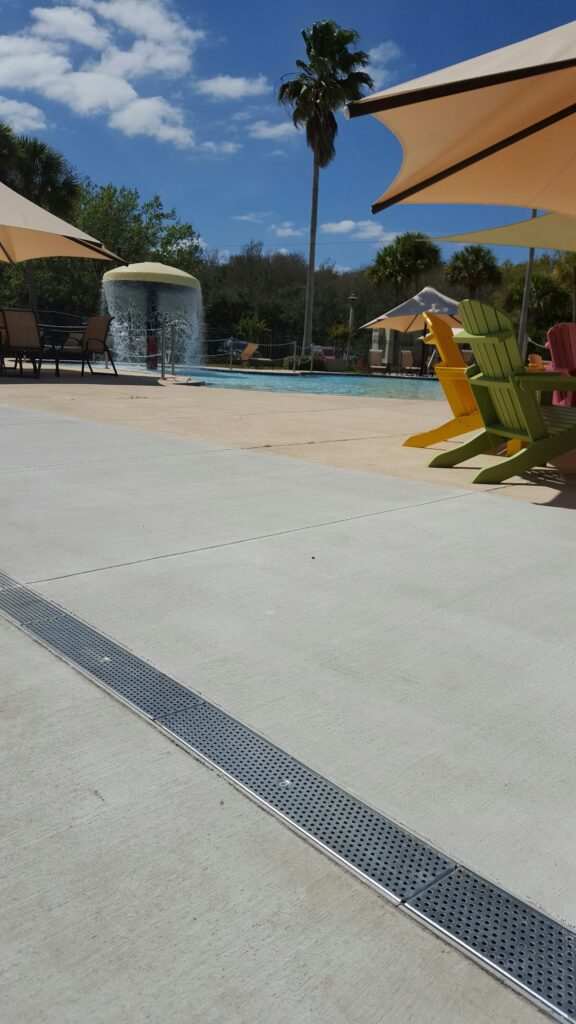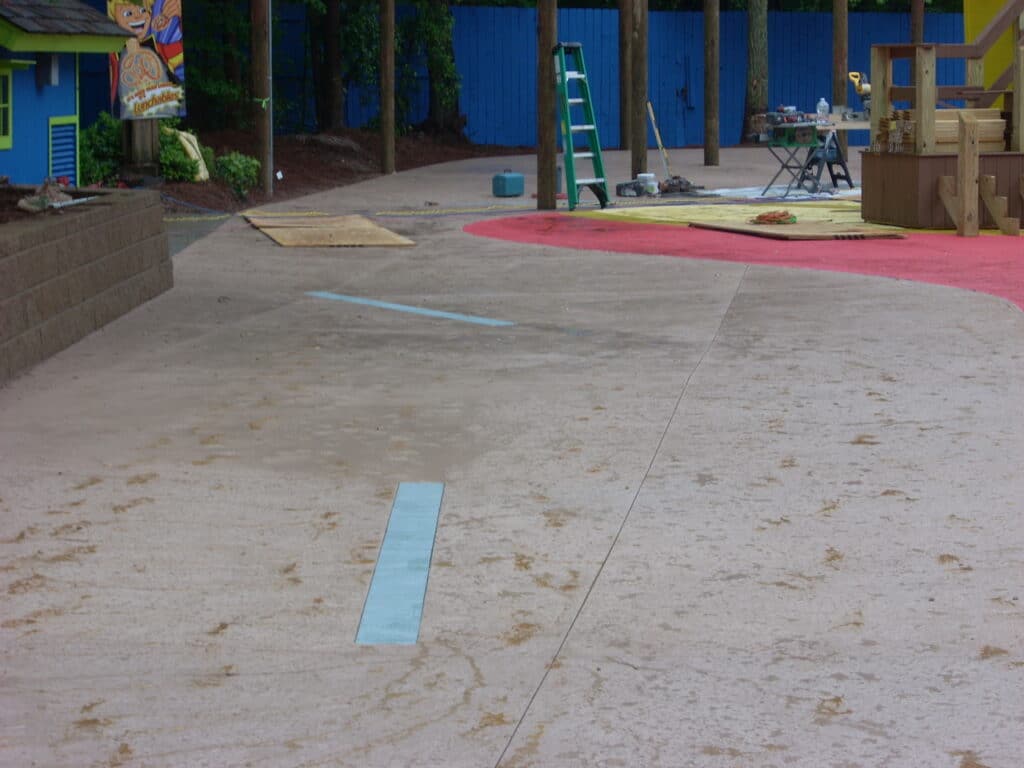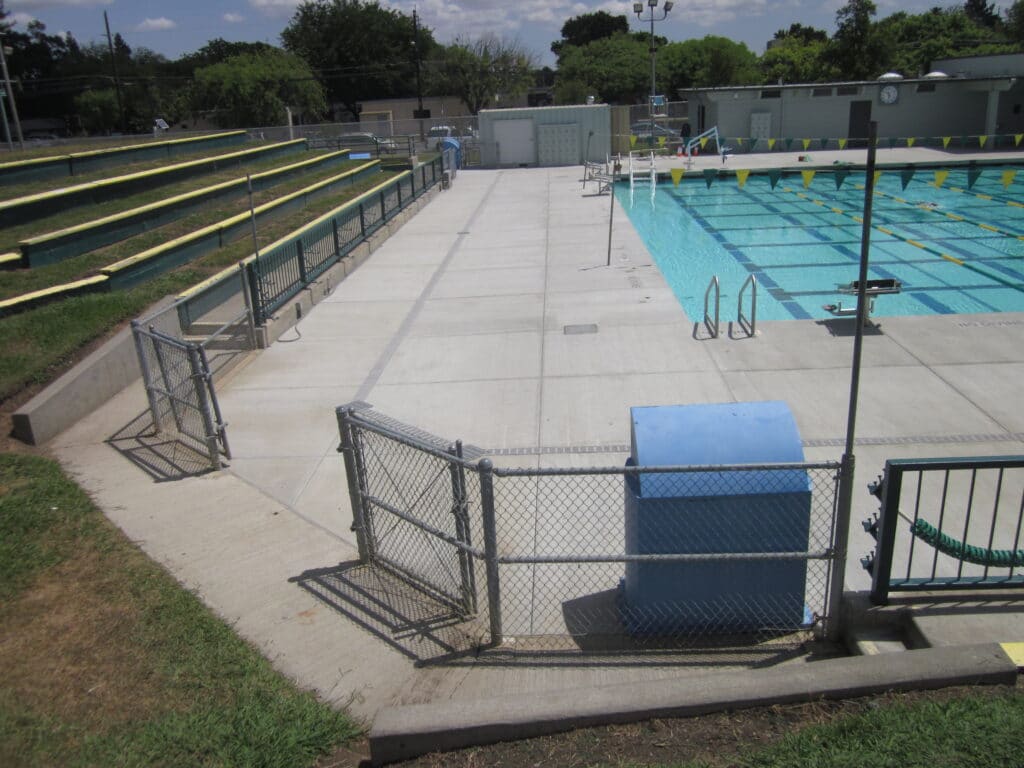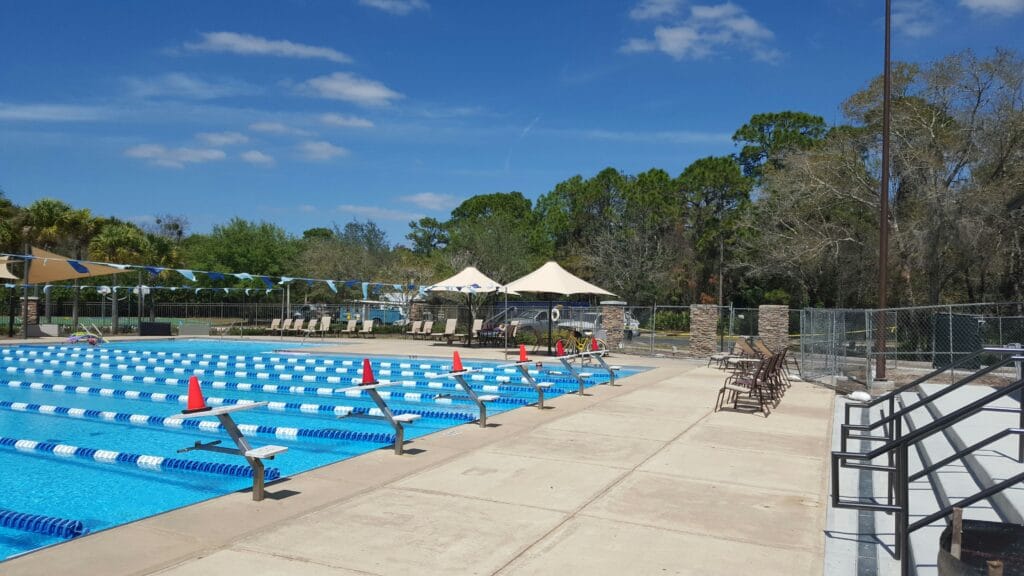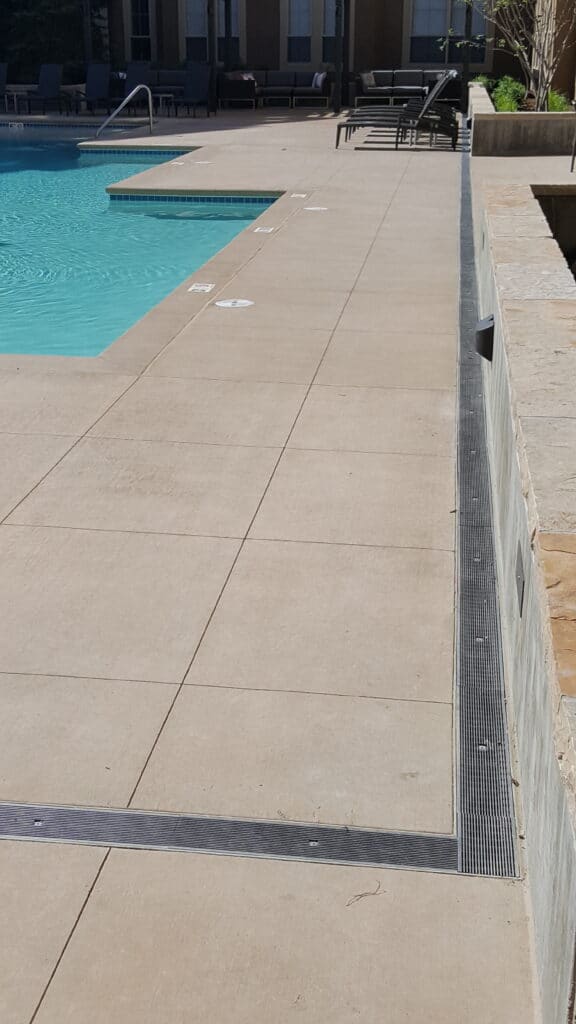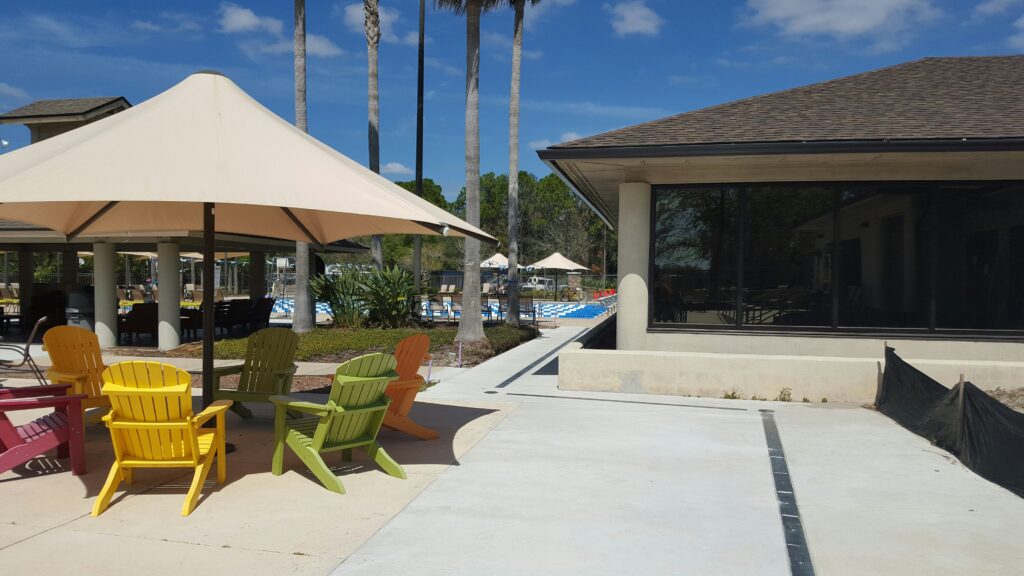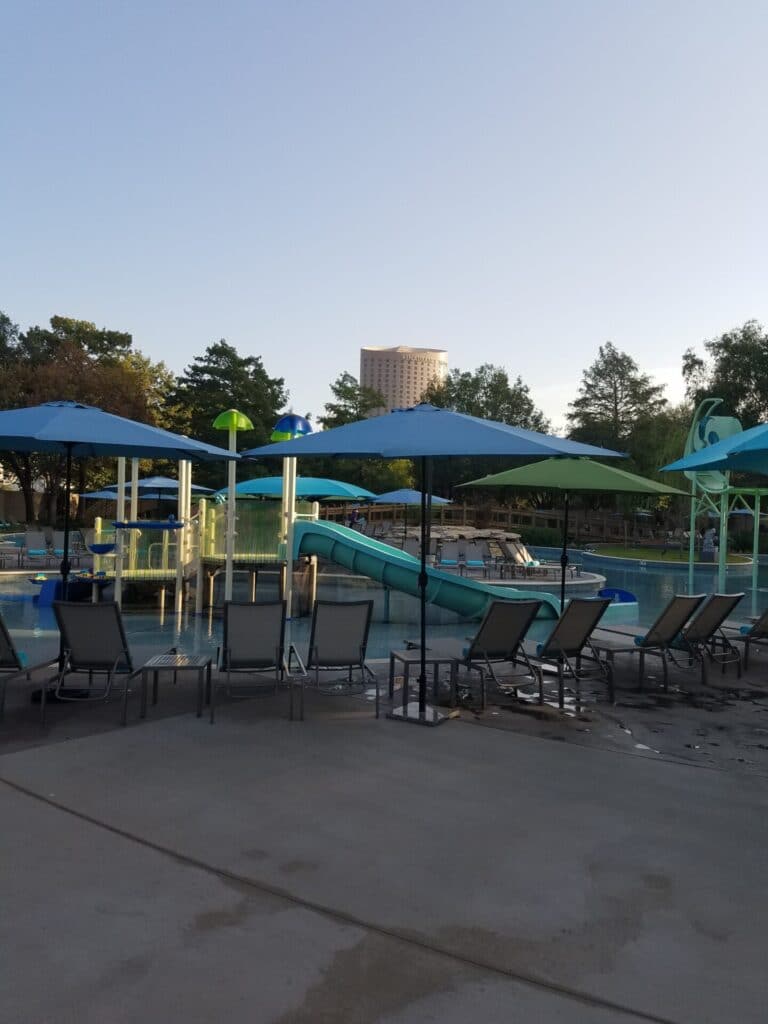We should break pools out into two different categories – indoor and outdoor swimming pools.
Indoor swimming pools are generally more accepting of different materials because you don’t have problems with ultraviolet light, debris, and generally have a temperature controlled environment. Interior pools only need to capture water that is splashed out of the pool or dripping off of swimmers. A 2″ or larger trench drain will effectively do the job. Drains with removable tops are always recommended to make long term maintenance easier. Even indoor applications will see enough sand and sediment to plug a small profile drain over time. For commercial applications it is still recommended that a larger 4″ I.D. drain be used. Slotted drains with clean-out ports should also be considered especially for applications using tile and stone for a sleek look.
Outdoor pools should be 4″ I.D. minimum. The debris will plug any system smaller than this in a very short time. Choose 4″ outlet piping or larger so that the system will pass any debris that gets into the trench drain. Any outdoor trench drain should have a removable top for cleaning of debris or clean out ports for slotted drains. Outdoor trench drains should also be UV resistant. Be careful of colors and materials that can heat up and potentially burn bare feet. The sun can make many dark colored or metal drain tops too hot to walk on.
Eric’sons Dura Trench recommends that linear drain products should be installed at a distance of 3 feet and 1 inch minimum from the inside wall of all pools. However, if the design necessitates a linear drain product to be within the 3-foot perimeter of the inside wall of the pool, it is necessary to specify proper bonding (grounding) of the linear drain metallic components in accordance with NEC 680.26.
Drain tops should be slip resistant and toe proof. Look for grates that have small openings that kid’s toes will not get into. Grates with a nonskid surface are preferred.

